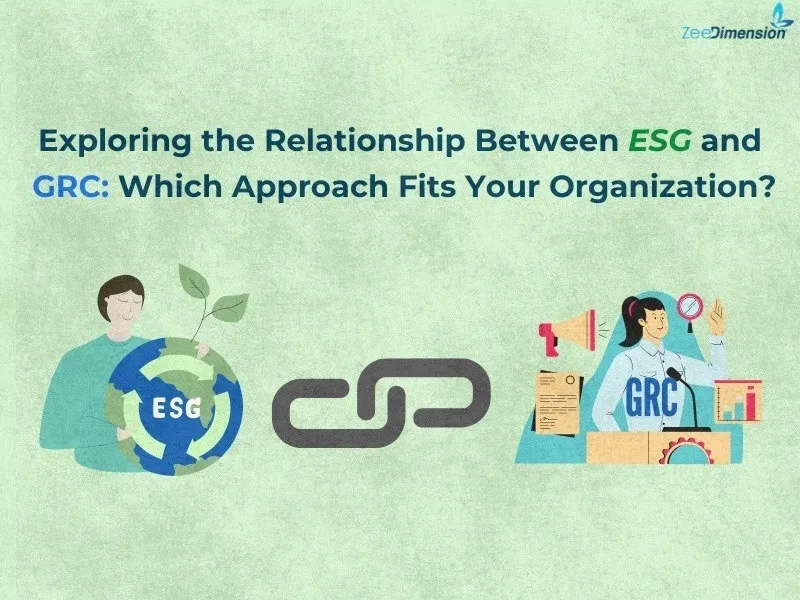
Why does the ESG-GRC relationship matter?
ESG and GRC focus on managing risks, ensuring compliance, and upholding good governance within organizations. However, the connection between them is not always clear. To better understand how they intertwine, exploring three key perspectives and their implications for businesses is helpful. This exploration will shed light on how aligning ESG and GRC practices can strengthen an organization’s overall approach to risk management, regulatory adherence, and ethical governance.
Perspective 1 | Is ESG a part of GRC?
ESG fits within the broader GRC framework, as it addresses risks that GRC already manages, such as compliance and governance. GRC tools can effectively monitor ESG-related risks like climate change and labor practices. For example, a manufacturer might integrate environmental risks into its enterprise-wide GRC system, demonstrating how ESG aligns seamlessly with GRC processes.
What does it mean for your organization if ESG is part of GRC?
If ESG is part of your organization’s GRC framework, it means a more proactive approach to risk management, treating ESG risks just like any other operational risks. It also ensures regulatory alignment, as ESG compliance ties into your existing governance policies. Additionally, it boosts efficiency by allowing organizations to leverage their current GRC processes for monitoring ESG factors.
Perspective 2 | Is GRC a part of ESG?
GRC processes are embedded within the broader ESG strategy, as ESG prioritizes sustainability and long-term value while GRC enforces and monitors these objectives with a focus on governance and compliance. For example, a financial institution might use GRC frameworks to ensure compliance with ESG objectives, such as adhering to climate disclosure regulations.
What does it mean for your organization if GRC is part of ESG?
• Strategic Alignment: GRC tools enforce sustainability goals.
• Stakeholder Focus: ESG expands governance to include societal and environmental impacts.
• Broader Scope: ESG-led governance balances financial and sustainability priorities.
Perspective 3 | Are ESG and GRC separate but overlapping?
ESG deals with sustainability, while GRC handles governance and compliance. These areas overlap in promoting ethical practices. For example, a tech company’s separate ESG and GRC teams might collaborate on data privacy.
What does it mean for your organization if ESG and GRC are separate?
When ESG and GRC are separate, organizations benefit from a tailored focus as each team prioritizes its respective areas of expertise. Collaboration points emerge as teams align on shared challenges, such as regulatory compliance, fostering synergy while maintaining distinct operational scopes. Additionally, this separation ensures clear accountability, with responsibilities for ESG and GRC explicitly defined, allowing for greater efficiency and clarity in addressing organizational goals.
Which Approach Fits Your Organization?
Consider what your industry needs, whether your priorities are more focused on ESG goals or governance processes, and whether your governance structure works better when integrated or kept separate.
Conclusion
Combining ESG and GRC is essential for long-term success. It strengthens risk management, ensures compliance, and opens new opportunities. Start by identifying what works best for your goals, industry, and audience. Then, assess your current setup to understand your position and shape an effective strategy.







